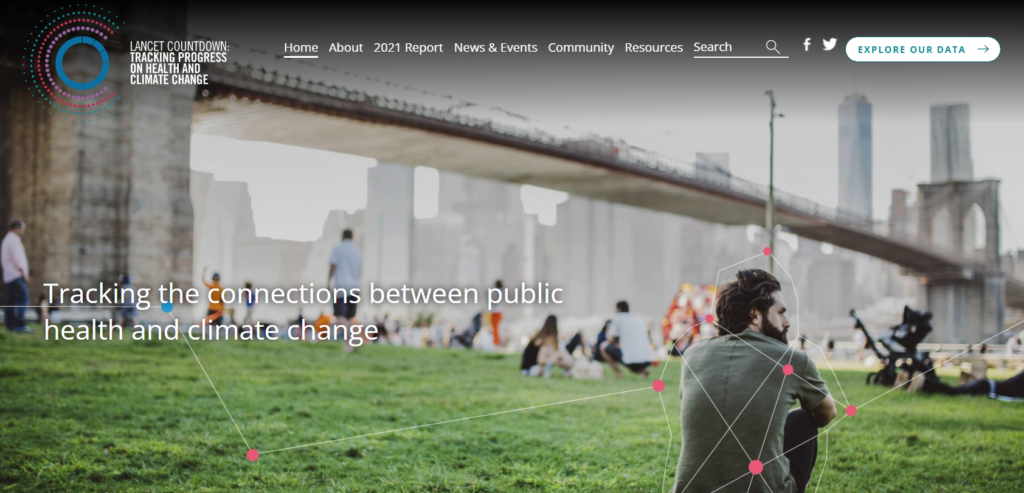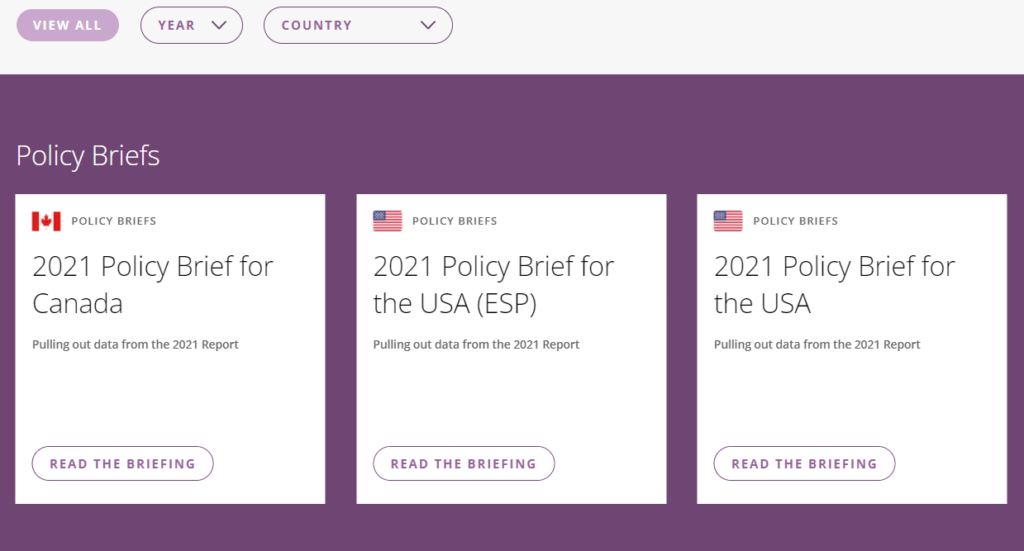For the past six years, the Lancet medical journal has been publishing an in-depth annual report tracking the impact of climate change on health around the world.
The annual reports, titled Lancet Countdown on Health and Climate Change, stand out in that they lay bare the connection between climate change and health, and shed light on the disproportionate impact of a warming climate on vulnerable countries and populations.
This year’s report, “The 2021 report of the Lancet Countdown on Health and Climate Change: Code Red for a Healthy Future,” published on Oct. 20, shows that in every region of the world, the impact of a warming climate on human health is getting worse compared with previous years and that climate change is further exacerbating health inequities.
It also finds that most countries are not doing enough to slow climate change. Many countries remain unprepared for public health or climate-related emergencies, the report adds.
“During a 6 month period in 2020, 84 disasters from floods, droughts, and storms affected 51.6 million people in countries already struggling with COVID-19, with the escalating impacts of disasters reducing their ability to respond to health emergencies,” the authors write.
The Lancet has produced the reports since 2016. The 2021 report builds on the previous five, documenting little to no progress by most countries to curb climate change and that health and inequity gaps continue to widen. It sends a clearer and stronger message than before that collective human health is in danger if countries don’t do their part to slow climate change.
“Although the world economy and health systems are recovering from a substantial acute global health crisis, climate change poses a much greater health threat in the coming decades,” the authors write.

Even for journalists who don’t typically cover climate change, the reports are a treasure trove of story ideas that can help readers, listeners and viewers understand how extreme weather events, including droughts, wildfires and heat waves, affect personal health.
“Climate change is a health crisis first and foremost and we really have to put health equity as not only the motivation to act, but also have that drive our response,” says co-author Dr. Renee Salas, a Yerby Fellow at the Center for Climate, Health, and the Global Environment at the Harvard T.H. Chan School of Public Health and an emergency physician at Massachusetts General Hospital. “As a doctor I can think of no better prescription for improving health inequity than action on climate change.”
While the main report takes a global look at climate change and health, the Lancet also publishes companion policy briefs for several countries, including the United States.
Salas was the lead author for this year’s U.S. policy brief. It explores the impact of extreme heat, droughts and wildfires, which could have broad and far-reaching impacts on health, and offers policy recommendations.

The Lancet global reports are written by an international consortium of more than 100 researchers from 43 institutions and United Nation agencies. The researchers include climate scientists, economists, energy and transport experts, social and political scientists, public health experts and front-line health professionals.
The 2021 Lancet report was released just before the United Nations’ global warming conference, Framework Convention on Climate Change 26th Conference of the Parties (COP26), scheduled from Oct. 31 to Nov. 21 in Glasgow, Scotland.
“About 20,000 heads of state, diplomats and activists are expected to meet in person starting Oct. 31 to set new targets for cutting emissions from burning coal, oil and gas that are heating the planet,” explains Lisa Friedman in an Oct. 19 story in The New York Times. “The conference is held annually but this year is critical because scientists say nations must make an immediate, sharp pivot away from fossil fuels if they hope to avoid the most catastrophic impacts of climate change.”
While national and global reports talk about the big picture, journalists can zoom in on their local community and find out what aspects of climate change are impacting people’s health. Is it wildfires, drought, more intense hurricanes or more days of extreme heat?
“Start with what people know,” says Salas. “I’ve had patients say, ‘My allergies are just so much worse over the past few years,’ or, ‘I just really had a lot more trouble getting my asthma under control,’ or, ‘It’s been so hot I can’t actually go out and run and do the things I want to do.’ I can guarantee that there are multiple ways that climate change is harming health in every region of the U.S. Start there and lead the readers on that path to say here’s what’s happening here.”
The 2021 Lancet Countdown report is filled with information and details. Here are seven tips to help you localize the report.
1. Explain how extreme weather affects human health
“There’s nothing obviously more personal than health and I think that we as a society have never before realized as we do now about how integral health is to a healthy functioning society and the pandemic has clearly shown us that,” says Salas, who is one of 100 new members elected to the National Academy of Medicine in October.
Climate change affects human health by increasing exposure to extreme weather events, increasing the transmission of infectious diseases, changing human migration patterns and affecting people’s livelihood and mental health, the report explains.
Droughts, for instance, increase the risk of respiratory and infectious diseases, worsen water quality and exacerbate mental health issues, particularly in rural areas, explains the Countdown’s U.S. policy brief. Heat waves, like the one that swept across the Pacific Northwest in June, can lead to death and pose health risks to mothers and babies. Wildfire smoke has been associated with increased risk of heart and lung disease and greater risk of preterm birth.
Extreme heat, which is defined as summertime temperatures much hotter than average, poses health dangers individuals, particularly to babies younger than 1 and people older than 65, people living in urban areas and people with health conditions such as heart disease, diabetes and respiratory disease. It also affects those with little access to health care and cooling systems, underscoring inequities.
2. Talk to local emergency room doctors and other health care providers
When someone comes in with an asthma attack, Salas looks for underlying drivers, which can be other medical conditions or the environment, like pollen count.
“Climate change is a diagnosis,” says Salas.
A February article in PNAS finds that human-caused climate change has already worsened the pollen seasons in the U.S., and the trends are likely to further exacerbate respiratory health impacts in coming decades. For her patients with asthma attacks, “climate change is a secondary diagnosis,” Salas says.
“I think of it as a river parable, where I’m in the emergency department, pulling patients one at a time from the river, and of course, there’s always more, but really the way to truly get to the root cause is to actually work upstream and figure out what’s causing patients to fall in the river in the first place,” says Salas. “That means we need to walk upstream and recognize that the burning of fossil fuels is driving air pollution and climate change, both of which are harming my patients in a multitude of ways.”
The Medical Society Consortium on Climate & Health is a good source of medical experts on climate change by state.
3. Check state and federal health databases to find trends in infections
Warmer weather is making the environment more favorable for transmission of mosquito-borne infections like Zika and chikungunya. Coastal waters have become more suitable for transmission of Vibrio bacteria, which can cause gastrointestinal infections, life-threatening cholera and severe wound infections.
The Centers for Disease Control and Prevention tracks heat-related illnesses, including emergency department visits, hospitalizations and deaths. Find out if your local hospitals are willing to share trends data for heat-related illnesses, or the data is available at the state health department.
The CDC’s ArboNET is the national arboviral surveillance system, managed by CDC and state health departments, which is searchable by state.
In addition to human disease, ArboNET maintains data on arboviral infections among veterinary disease cases, mosquitoes, dead birds, and sentinel animals, which are animals that are put in an environment to find out if an infectious disease is present. Arboviral infection is a general term used for diseases caused by viruses that are spread by insects such as mosquitoes and ticks.
4. Shed light on climate change’s impact on vulnerable populations
In 2020, adults over the age of 65 lived through a total of nearly 300 million more days of heatwave in the U.S. compared with the 1986-2005 average baseline, making it the second highest year of exposure recorded since 1986, according to Countdown’s U.S. policy brief. Infants under one year experienced a total of nearly 22 million more days of heatwave in 2020 with respect to that same baseline.
The U.S. policy brief also notes that across the majority of states, exposure to air pollution is higher for Black, Latino, Alaskan Native or American Indian, Asian American or Pacific Islander and other people of color, even when controlling for income, in nearly every emissions category in rural and urban areas.
“Decades of racially-biased policies — both implicit and explicit — including structural discrimination in housing, zoning, and the placement of industrial and transportation infrastructure have resulted in widespread and persistent air pollution inequities,” the authors write.
5. Report on your local and state climate change and extreme weather plans
Climate change is making weather events extreme. It’s making winter storms and hurricanes more powerful.
“We’re going to see more of those things affecting local communities in ways that they’ve never experienced before,” says Ian Hamilton, executive director for Lancet Countdown on Health and Climate Change and Professor of Energy, Environment and Health at University College London Energy Institute. “Flooding in West of England can disrupt ambulatory care services because they can’t get people to hospitals.”
Ask officials at your city and local hospitals how they are preparing for extreme weather. Explain to your audience that their government is responsible for taking action to slow climate change.
“Recognize that actually your government and those large corporations who are going to be major contributors to this issue, have to take responsibility and act in our best interest,” says Hamilton. “But then, yes, we as individuals can begin to take actions,” by taking steps like reducing our carbon footprint.
6. Dig into the report’s climate change indicators for story ideas
The Countdown on Health and Climate Change report tracks 44 health indicators, which assess various issues, ranging from heat-related deaths, drought, city-level planning, benefits and harms of air conditioning, urban green spaces, economy and media coverage of health and climate change.
The indicators are broken into five sections:
- Climate change impacts, exposures and vulnerability: The indicators in this section look at the connection between health and heat, extreme weather events, infectious diseases, food insecurity and displacement and migration. It also underscores the fact that even though the health impacts of climate change are felt across the world, they disproportionately affect disadvantaged populations.
- Adaptation, planning and resilience for health: This section assesses the capacity of governments and health systems to handle health emergencies, providing climate information to the health sector and the level of climate change funding dedicated to health systems. “A key theme across all the indicators is inequity and, although these indicators mostly track inequities between countries, within-country inequity is a substantial challenge in moving towards resilience and sustainability,” the authors write.
- Mitigation actions and health benefits: The indicators in this section assess the relationship between health and energy systems such as clean household energy, air pollution, transportation, food and agriculture, and emissions from the health care sector. The carbon intensity of the globally energy system has been unchanged, the authors write, costing millions of lives.
- Economics and finance: This section’s indicators assess the economic impact of climate change and its mitigation, such as economic loss due to extreme heat events, cost of heat-related deaths, loss of earnings from heat-related labor capacity reduction, cost of the health impacts of air pollution and economics of transition to clean energy. “As governments begin to invest in recovery from COVID-19, there is a crucial window of opportunity to reduce fossil fuel subsidies, invest more in clean energy, and support a green recovery,” the authors write.
- Public and political engagement: The final section of the report assesses engagement in health and climate change by the media, the public, scientific journals, governments and corporate sector. It concludes that health and climate change are increasingly addressed together and that the COVID-19 pandemic appears to be a major driver of engagement in health and climate change in 2020. It also find social inequities in public, scientific and political engagement, with low-income countries having lower levels of media and science coverage of climate change and health.
7. Remind audiences that without action, climate change is going to have a worse impact on our health than it is having today
The Lancet Countdown report warns that without an adequate response, the health effects of climate change will worsen in the coming decades.
“There’s no vaccine for climate change,” says Hamilton.
More resources
The 2021 Countdown report has data visualizations available online.
At The Journalist’s Resource, we have dozens of other tip sheets, research roundups and explainers on various aspects of climate change.
Covering Climate Now was co-founded by the Columbia Journalism Review and The Nation in association with The Guardian and WNYC in 2019 and collaborates with journalists and newsrooms to produce more informed and urgent climate stories, to make climate a part of every beat in the newsroom. The organization also offers best practices for climate reporting.
Climate Central is an independent organization of leading scientists and journalists researching and reporting the facts about our changing climate and its impact on the public.
World Weather Attribution, an international collaboration provides robust assessments on the role of climate change in the aftermath of extreme weather or climate-related events.
CDC’s Climate and Health Program works with various communities to identify climate change’s impact and the potential related health effects.
CDC’s Heat & Health Tracker provides local heat and health information so communities can better prepare for and respond to extreme heat events.
Climate Reporting Masterclass, a project of Climate Matters in the Newsroom, features climate experts providing journalists with tools, tips and resources for their reporting.
Climate Communication is a nonprofit science and outreach website and information resource, and a project of Aspen Global Change Institute, a nonprofit institute dedicated to furthering the scientific understanding of Earth systems and global environmental change.
“What journalists need to know when covering climate change” is a succinct tip sheet by NPR Climate Team to help journalists explain the impact of climate change on our lives.


Expert Commentary